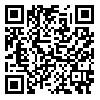BibTeX | RIS | EndNote | Medlars | ProCite | Reference Manager | RefWorks
Send citation to:
URL: http://ioh.iums.ac.ir/article-1-720-en.html
Background and aims : "circadian" is the changes of behavioral and metabolic activity during day and night in living organisms. The human body has circadian rhythm too, which is repeated every 24 hours. The aim of this study is to determine the validity and reliability of the 11Q of CTI questionnaire, according to Iranian workers society.
Methods : Translation and cultural adaptation of CTI questionnaire was performed according to standard methods of Translate & Back translate. The content validity was done using the opinions of 10 experts. In this study, 30 rotating shift worker (SW) nurses and 30 employees of Day worker (DW) from Kerman University of Medical Sciences completed their questionnaire. To check the reliability the Cronbach's alpha was used followed by factor analysis to confirm the validity of the questionnaire. Data analysis was performed using the Lisrel 8.8 and spss18 software.
Results : The questionnaire contains two domains: Rhythm stability of circadian and rhythm amplitude of circadian. Overall reliability of the questionnaire using Cronbach's alpha was calculated 0.76. Cronbach's alpha for amplitude and stability of rhythm for rotating nurse shift worker (SW) respectively was 0.70 and 0.82. Values of Cronbach’s alpha index for two domains were equal to 0.75 and 0.78 in day workers (DW) employees. The Kaiser index was 0.79, which indicates good conditions for the factor analysis. Chai-Square of Bartlett's test obtained (p-value< 0.0001) Shows the correlation between variables. Principal component analysis was performed with Varimax rotation analysis. With considering a two-factor model, 54.3% of the total variance was explained by two factors, the 39.51percentage was assigned with the first factor and 14.82% for the second factor.
Conclusion: The Persian version of the CTI questionnaire can be used as a valid and reliable tool for determining the type circadianReceived: 2012/06/1 | Accepted: 2013/09/29 | Published: 2013/09/29
| Rights and permissions | |
 |
This work is licensed under a Creative Commons Attribution-NonCommercial 4.0 International License. |





